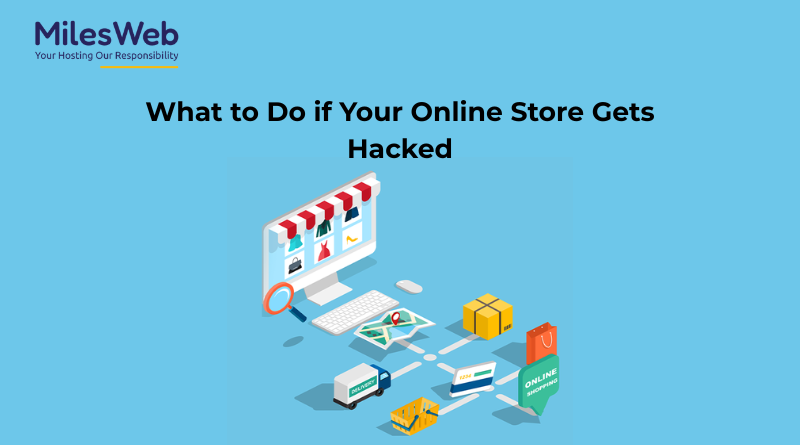What to Do if Your Online Store Gets Under Attack? Essential Recovery Steps 2025
Just like a brick-and-mortar store, an online shop requires security, which is highly important. Cyberattacks are on the rise with the innovation of technology and computers. Any actions taken in response to a hack are important to mitigate the repercussions of the security breach, defend customer confidence, and restore business processes smoothly. Thus, always go for premium security-enforced ecommerce hosting services for your store if your online store gets under attack.
With profound web hosting plans (e.g., Ubuntu VPS server), security is maintained thoroughly. This article discusses the crucial steps to follow in case there are security breaches in your eCommerce website.
Essential Recovery Steps—If Your Online Store Gets Under Attack
Secure Your Store: A Guide to Post-Hack Recovery
Step 1: Examine the Systems
Remain calm and composed—taking a moment to gather the necessary information allows you to address the situation with greater clarity and efficiency. Collect real-time information about the breach, such as
- Are customers reporting suspicious activity?
- Is the website defaced or gone offline?
- Are all admins out-seated, and do new users exist?
- Is there a breach of payment details and customers’ private data?
Taking these factors into consideration will help you determine the type of attack. It can be a malware injection, phishing, brute-force login, or a breach of database.
Step 2: Temporarily Disable Your Website
To minimize damage, take the website offline or switch it to maintenance mode. This prevents further actions from attackers and keeps your users safe from any malware or phishing scams.
If you have hosted with MilesWeb, which is a managed hosting provider, contact the support team right away. They might provide immediate containment or restoration services to protect your website environment.
Step 3: Notify Your Hosting Provider
When it comes to dealing with a hacked website, your web hosting provider is the first line of defense. Get in touch with their support team and let them know about the problem. Trustworthy ecommerce hosting providers offer:
- Finding the access point
- Removing infected files or malware
- Restoring the latest backup, if it exists
- Reinforcing the security of the server
These scenarios can be saved by service providers like MilesWeb, who include malware scanning, firewall protections, and backups of data on a daily basis.
Step 4: Scan for Malware & Malicious Files
Make use of a reputable plugin, malware scanner, or security plugin that scans all the website files, including the themes and plugins. It is beneficial to use content management systems such as WordPress and Magento, as they provide tools like Wordfence Security, Sucuri SiteCheck, MalCare, or ImunifyAV (within cPanel) that search for and help in the removal of malicious files.
Step 5: Restore a Clean Backup
If a recent clean backup of the website exists, restore it. This is usually the quickest and safest method to resume the store.
Remember to:
- Verify the backup is clean and safe from malware.
- Ensure all plugins, themes, and the CMS are updated to the latest versions prior to restoration.
- Remove all inactive plugins and themes to eliminate potential vulnerabilities.
- Reach out to your hosting provider if there are no backups, as they might store automatic backups on your behalf.
Step 6: Change All Passwords and Security Keys
Change all passwords for the following accounts immediately after the website is cleaned or restored:
- Website admin accounts
- FTP/SFTP access
- Database login
- Hosting control panel (cPanel or Plesk)
- Domain email accounts
- Third-party integrations (payment gateways)
Secure all accounts with strong and distinct passwords. Consider invalidating existing sessions by resetting security keys on the website.
Step 7: Inform Customers Impacted (If Applicable)
In the event that a customer’s personal details or payment details are hacked, it’s only right to inform them. Trust is vital; hence, honesty comes into play.
Craft a clear and professional notification that explains
- What has occurred?
- What details are available to the public?
- What is being done to remedy it?
- What customers need to do (e.g., change passwords, bank account surveillance)
Depending on your territory, there is a possibility that you are in breach of the law in reporting the breach under data protection agreements like GDPR, CCPA, or PCI-DSS mandates.
Step 8: Increase Website Security
Take proactive measures to prevent future hacks:
- Use a web application firewall (WAF) to block the trespassing traffic.
- Activate two-factor identification for every admin account.
- Restrict login attempts to counter brute force attacks.
- Secure data transfers using SSL/TLS encryption.
- Schedule automated backups regularly, as well as scans for security flaws.
If managing security seems overwhelming, consider switching to managed hosting with built-in protection features and expert assistance.
Step 9: Surveillance of Suspicious Conduct
Keeping your site functionality in mind, checking logs, traffic behavior, and user activity will let you understand whether your site is functioning properly or not. Make sure to keep an eye on the following things:
- False logins
- Unexpected increases in traffic from different new sources
- Suspicious actions made by an admin account
- Services like Sucuri Monitoring or Google Search Console are beneficial in determining whether an issue like SEO spam or being blacklisted by search engines exists.
In conclusion,
An e-commerce store that gets hacked is surely a tough pill to swallow; however, one must keep in mind that it’s not everything. Acting promptly, eliminating the current site, and restoring it to a clean version will let you bounce back healthier while improving your wall of defense.
Mitigating risks before they escalate is far more strategic than resolving problems after they occur. Choosing a hosting provider like MilesWeb that incorporates security features including malware scanning, free SSL, and auto backups will be a resolution to the problem. Routine upkeep, in addition to using strong passwords and security plugins, will guarantee the safety of the store.

